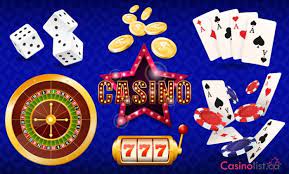The Thrill of Slot Machines: A Deep Dive into Their Appeal and Mechanics
Slot machines are undoubtedly one of the most iconic symbols of casinos, both in physical locations and online platforms. Their flashing lights, thrilling sound effects, and the anticipation of a spin keep players coming back for more. But what exactly makes slot mania machines so irresistible? Let’s take a closer look at the history, mechanics, and psychology behind these beloved machines, as well as the future of slots in the digital age.
The History of Slot Machines: From Mechanical to Digital
The story of slot machines dates back to the late 19th century. The first mechanical slot machine, Liberty Bell, was invented in 1895 by Charles Fey in San Francisco. This machine featured three spinning reels and five symbols: horseshoes, diamonds, spades, hearts, and the famous Liberty Bell, which became the highest-paying symbol. It was simple, yet it laid the groundwork for the slots we see today.
By the mid-20th century, slot machines evolved with the introduction of the first electromechanical machines. These new slots combined mechanical and electrical components, allowing for more complex features like multiple paylines and larger jackpots. However, it wasn’t until the advent of the internet in the 1990s that slot machines took another giant leap forward. Online casinos were born, and slots transitioned from physical reels to digital screens, opening up a world of new possibilities for game developers.
The Mechanics of Slot Machines: How Do They Work?
At their core, slot machines are a game of chance. The outcome of each spin is determined by a random number generator (RNG), a computer algorithm that ensures each spin is completely random and independent of previous spins. The RNG ensures fairness and prevents any manipulation, making slot machines a trustworthy form of entertainment.
Slots are designed around the concept of “paylines.” A payline is a line where matching symbols must land to win a payout. Traditional slot machines usually have a single payline, whereas modern video slots can have dozens or even hundreds of paylines, making the potential for winning much higher. Some slot machines also feature bonus rounds, free spins, and multipliers that add layers of excitement to the gameplay.
There are various types of slots:
- Classic Slots: These are the traditional three-reel machines with a simple design and fewer paylines. They often evoke nostalgia for the old-school casino experience.
- Video Slots: These feature advanced graphics, animations, and sound effects. They can have anywhere from 5 to 243 paylines or more, as well as exciting bonus features.
- Progressive Slots: These machines are linked to a network, with a portion of each player’s bet contributing to a jackpot that can grow to massive amounts. These slots have the potential for life-changing wins, though they tend to have lower odds of winning.
The Psychology Behind Slot Machines: Why Do People Love Them?
Slot machines are not only designed to be entertaining, but they also incorporate psychological elements that make them incredibly addictive. One key factor is the concept of variable reinforcement. This means that players are not rewarded consistently, but rather at unpredictable intervals, which keeps them engaged. This uncertainty of when a big win will occur creates a sense of excitement and compels players to keep playing.
Another psychological trick at play is the “near-miss” effect. When a player is just one symbol away from a big payout, the brain interprets this as a potential win, even though it isn’t. These near-miss moments can trigger the release of dopamine, the neurotransmitter associated with pleasure and reward. This, in turn, makes players more likely to continue spinning in the hopes of hitting the jackpot.
The sound design in slots also plays a big role in the overall experience. The mechanical “clink” of the reels, the celebratory sounds of winning, and the flashing lights all create an immersive atmosphere that enhances the emotional experience of the game. This combination of sound, light, and psychology keeps players hooked and engaged for longer periods of time.
The Future of Slot Machines: Virtual Reality and Beyond
As technology continues to evolve, so too does the world of slot machines. One exciting development is the integration of virtual reality (VR) into slot gameplay. VR allows players to step into fully immersive worlds where they can interact with the game environment as if they were inside it. Imagine spinning the reels of a slot machine in a virtual casino, with 3D animations and dynamic interactions that make the game feel like an adventure.
In addition to VR, augmented reality (AR) could take slot gaming to the next level by overlaying digital elements onto the physical world. This could create hybrid experiences where players can interact with both real and virtual elements simultaneously, further blurring the lines between the physical and digital realms.
Another exciting innovation is the use of blockchain technology to enhance the transparency and security of online slots. Blockchain can provide verifiable and immutable records of game results, ensuring that players can trust the fairness of the RNG and the payouts.
Conclusion: The Enduring Appeal of Slot Machines
Despite the rapid technological advancements, one thing remains constant: the allure of slot machines. Their combination of simplicity, excitement, and potential for big wins continues to captivate players around the world. Whether it’s the thrill of a single spin or the hope of hitting the jackpot, slots offer a unique form of entertainment that transcends generations.
As the industry continues to innovate, it’s clear that slot machines will evolve to meet the changing demands of players. Whether through virtual reality, augmented reality, or blockchain, the future of slots looks brighter than ever. But for now, the classic spin of the reels and the sound of a jackpot remain a timeless pleasure that keeps players coming back for more.

